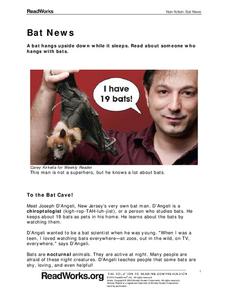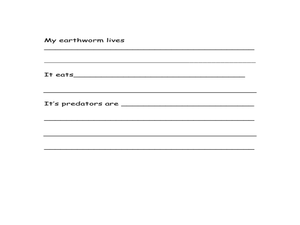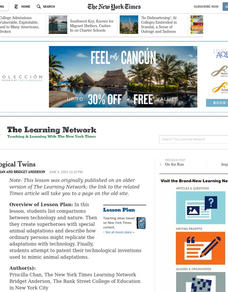Curated OER
Nocturnal vs. Diurnal Animals
First graders identify nocturnal and diurnal animals. In this animal lesson, 1st graders discuss the differences between animals that are active during the day and those that are active at night. Students write summaries about their...
Curated OER
Guided Reading "In the Night Sky"
Students participate in a variety of reading exercises, such as choral reading and reading response journal, to reinforce concepts about space and nocturnal animals.
Read Works
Bat News
Get the bat facts with a short nonfiction reading passage. After reading the passage, readers respond to questions that focus on main idea, inferencing, vocabulary in context, and author's purpose.
Jessica Winston
Magic School Bus Going Batty
Have a scary adventure with a set of reading activities based on Joanna Cole's The Magic School Bus Going Batty! Several worksheets encourage kids to predict what they will learn with a KWL chart, examine the new vocabulary words from...
Curated OER
We Like to Imagine - Animals
Students describe a pretend animal. They read "The After School Monster." Students read other books and discuss whether or not the characters are real. Students make a drawing of a pretend animal and of a real animal. They make up a...
Curated OER
guided reading lesson using BATS
Students answer questions, then after reading several bat books, students revisit the questions.
Curated OER
Earthworms and Making a Wormery
Students explore the environment by researching insects. In this earthworm instructional activity, students utilize soil and plexiglass to build a see through wormery in which students can observe the worms at work. Students identify the...
Curated OER
Technological Twins
Learners list comparisons between technology and nature. Then they create superheroes with special animal characteristics and describe how ordinary persons might replicate the changes with technology.









